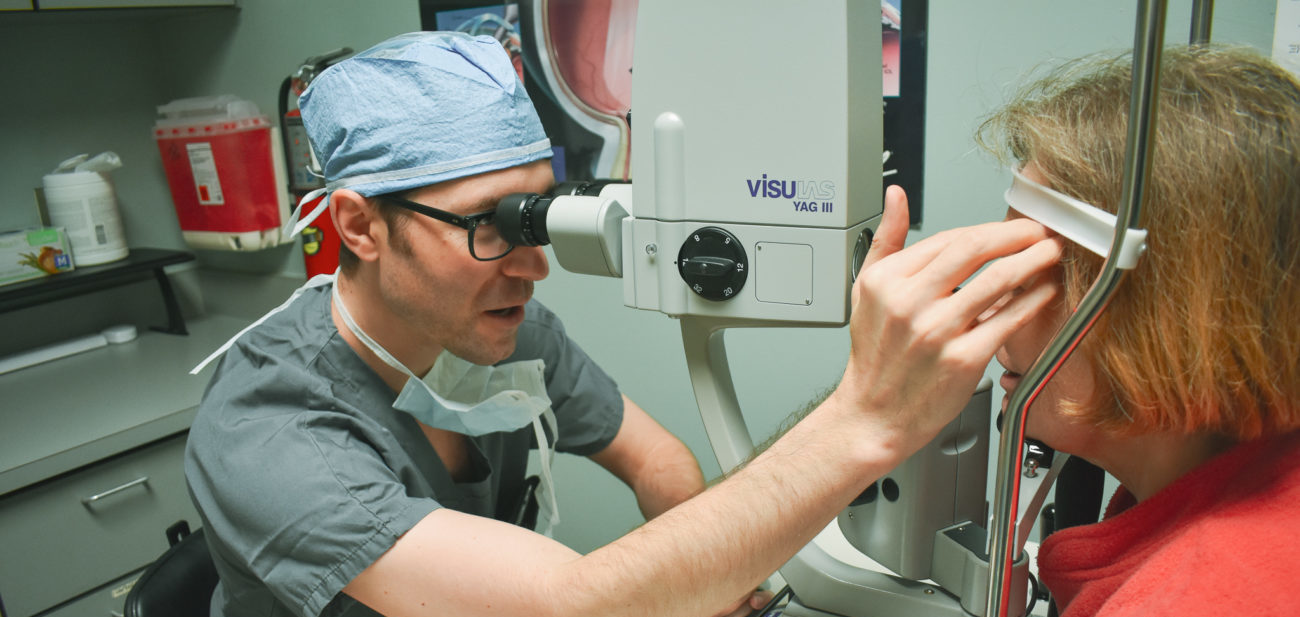What to Expect During Your Glaucoma Surgery
One of the first things patients say at their first check-in after minimally-invasive glaucoma surgery is, “that was easier than I was expecting!”
Every surgery is serious and requires skill, care, and preparation, but glaucoma surgery can be fast, especially with minimally-invasive options. We hate to see our patients endure pain or worsening vision loss purely because of the stigma surrounding surgery on something as sensitive as your eyes – so let us walk you through what a patient might experience.
Preparation
Nearly all glaucoma surgeries are outpatient, meaning that you’ll be able to rest and recuperate in the comfort of your own home following your surgery. While your doctor may ask you to observe standard anesthesia protocols the day before and the day of, like fasting and drinking only water, you won’t need to spend any additional time at the hospital except for the surgery and observation immediately afterward. Of course, you will need someone to drive you to the doctor’s office and back home since your eye will be recovering.
Should you require glaucoma operations on both of your eyes, you’ll never need to have both operations on the same day.
During the Surgery
Your doctor will most likely apply numbing eyedrops, or local anesthetic, directly on your eye which will prevent you from feeling any discomfort during the surgery. You’ll be lying down during this time so all you have to do is look straight up – no need to worry about blinking as your surgeon will have placed a holder around your eyelid to keep your eyes open. The eyedrops will also keep your eyes moist during this time. If you’d like, you can also be given a mild sedative to help calm your nerves during the procedure.
Depending on the nature of the surgery, you may be able to see your doctor at work; in almost all cases, you are awake during the procedure and don’t need to “under.” This minimizes risks and also lets you recover faster. You’ll be surprised at how quickly the doctor can make the corrective incision or adjustments to relieve the pressure in your eye.
There is a large spectrum of possible glaucoma surgeries. These span from minimally-invasive surgery to larger shunt/filter procedures. These can take anywhere between 15 minutes to an hour.
Recovery
Most patients are cleared to head home shortly after their surgery; they may experience some swelling or discomfort as their eye heals, but you may also observe a lessening of any “internal” discomfort caused by glaucoma. You should reserve the following day for a full recovery and plan on relaxing and avoiding screens or fine print; you’ve earned it!
Most patients recover in two to three weeks. During this time, your doctor may prescribe special drops to aid the recovery process, which will be in addition to any drops you already take to treat your glaucoma. The National Eye Institute warns against any exercise during this time that’s physically demanding and liable to raise your blood pressure, like heavy lifting or bike riding, as this could increase internal pressure within your eye and stress the healing area. Your doctor will be able to advise you on when you can return to regular activities.
Seeing the Bigger Picture
Holding off on glaucoma surgeries can not only lead to long-term damage to your vision; it could mean necessitating even more trips to the hospital for more complex procedures! It may be time to save yourself pain and irreparable eye damage through an easily-scheduled appointment.
With over eight offices in the Roanoke area and additional offices in Martinsville, Blacksburg, Smith Mountain Lake, and Wytheville, Vistar Eye Center’s doctors make it convenient and easy to ensure your future optical health, with a focus on minimizing your stress and maximizing your long-term eye health. Schedule an appointment at a convenient location today.

